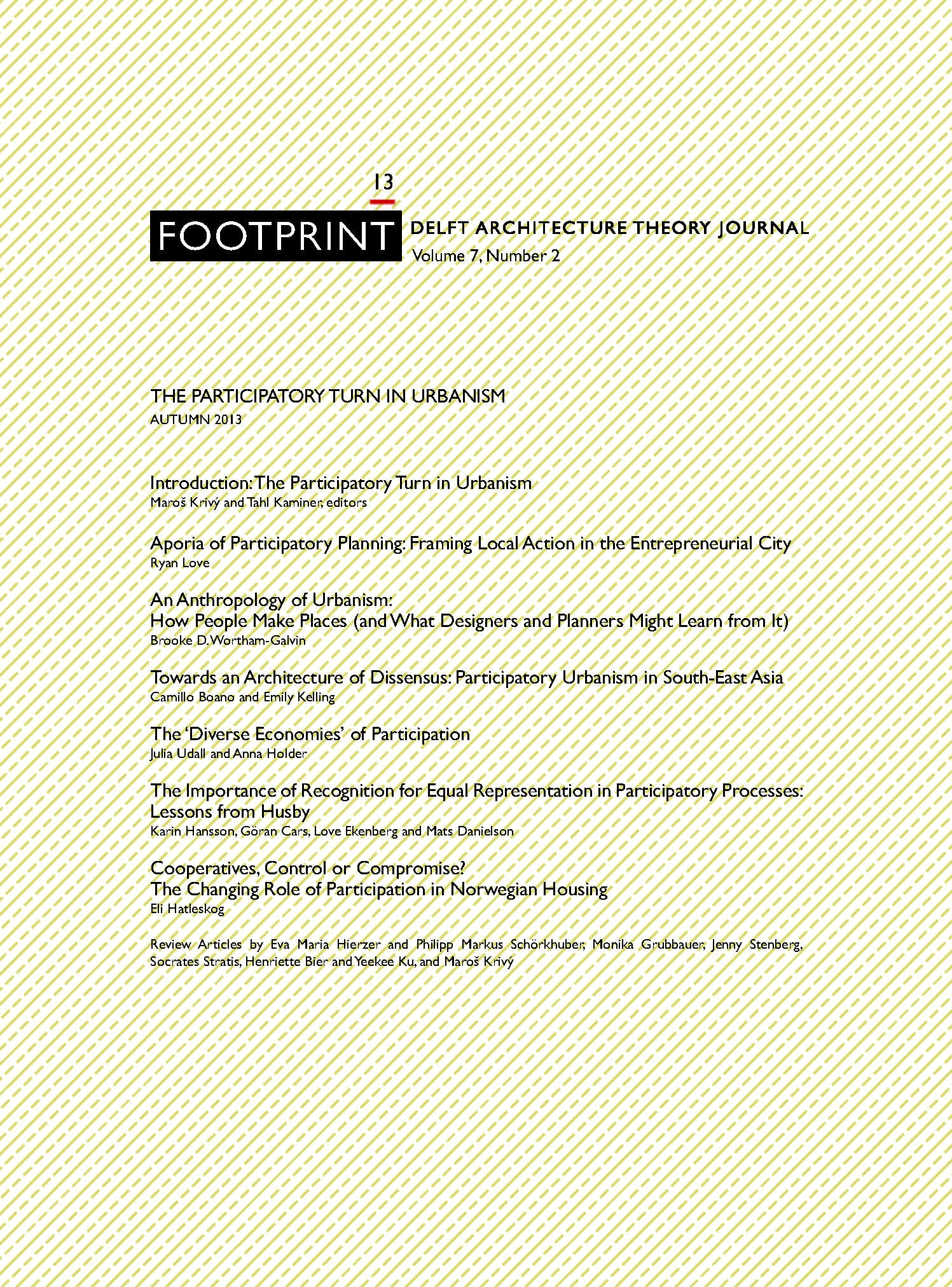An Anthropology of Urbanism: How People Make Places (and What Designers and Planners Might Learn from It)
DOI:
https://doi.org/10.7480/footprint.7.2.768Abstract
In their word play on what design praxis might succeed the New Urbanism movement in the United States, the July 2013 article “Newest Urbanism” in the Architect introduced to the uninitiated the concept of tactical urbanism.
Defining tactical urbanism as “temporary, cheap, and usually grassroots interventions – including so-called guerrilla gardens, pop-up parks, food carts, and ‘open streets’ projects – that are designed to improve city life on a block-by-block, street-by-street basis,” the article claims that it took this approach to shaping the city less than a decade to mainstream into the practices of US cities and firms alike. While Architect used the term tactical urbanism, to characterize this effort, this essay will use the term participatory urbanism to discuss how ordinary people are engaged in making place.
This discussion of participatory urbanism will: describe the context from which it emerged in the United States, define the term and its current manifestations, and describe an early example of participatory urbanism seeded by digital tools in order to raise questions about participatory urbanism role in the making of place in the twenty-first century.
Downloads
Published
Issue
Section
License
- Authors retain copyright and grant the journal right of first publication with the work simultaneously licensed under a Creative Commons Attribution License that allows others to share the work with an acknowledgement of the work's authorship and initial publication in this journal.
- Authors are able to enter into separate, additional contractual arrangements for the non-exclusive distribution of the journal's published version of the work (e.g., post it to an institutional repository or publish it in a book), with an acknowledgement of its initial publication in this journal.





